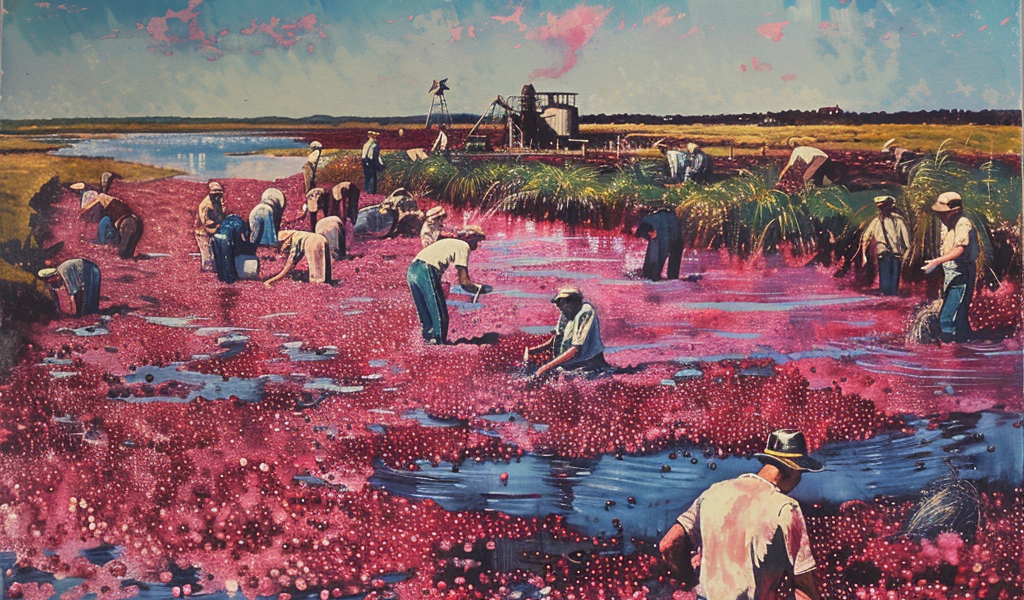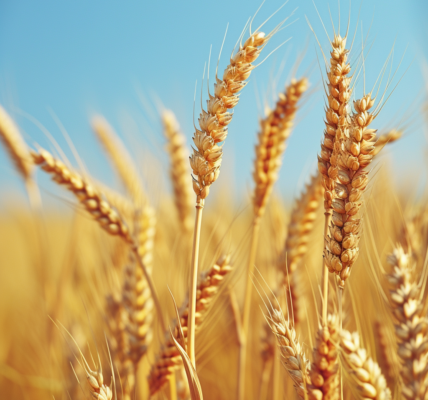As Thanksgiving approaches, the picturesque cranberry bogs of southeastern Massachusetts come alive with activity, showcasing the vital role these wetlands play in the annual harvest of this beloved holiday staple. The Rocky Meadow bog is a prime example, where vibrant pinkish-crimson cranberries float on the water’s surface, signaling that the harvest is in full swing.
In the weeks leading up to Thanksgiving, workers can be seen waist-deep in water, skillfully herding the ripe cranberries toward a large pump. This equipment is essential for vacuuming the berries from the bog and transporting them to waiting trucks. Once harvested, the cranberries go through a meticulous process at the processing plant, where they are separated from leaves and vines, ultimately being transformed into a variety of products such as sauce, juice, and dried berries.
The cranberry plants, unique to North America, start their growth cycle in May. Farmers utilize a strategic flooding method to facilitate the harvest. When the berries are ripe, they flood the bogs, allowing the berries to float to the surface. A specialized picking machine then shakes the berries from the vines, making the harvesting process efficient and effective.
Massachusetts and Wisconsin are the leading producers of cranberries in the United States, with Ocean Spray being a significant player in the industry. The cooperative, formed by cranberry growers, has become synonymous with cranberry products, ensuring that these tart berries are available year-round, not just during the Thanksgiving season.
In Wisconsin, cranberry farmers also employ similar harvesting techniques, utilizing the state’s vast wetlands to cultivate cranberries. The state’s unique climate and soil conditions are ideal for growing these berries, making it a key contributor to the national cranberry supply.
As families prepare for Thanksgiving feasts, the journey of cranberries from bog to table is a story of hard work and dedication. The cranberry harvest not only provides a delicious addition to holiday meals but also supports local economies and preserves traditional agricultural practices.
In recent years, there has been a growing interest in sustainable farming practices among cranberry growers. Many are exploring eco-friendly methods that minimize environmental impact while maintaining high-quality production. This shift towards sustainability is crucial, as it ensures that future generations can continue to enjoy cranberries and the traditions associated with them.
The cranberry industry also faces challenges, including fluctuating market prices and the impacts of climate change. Growers are adapting to these challenges by diversifying their crops and employing innovative farming techniques. By staying resilient and proactive, cranberry farmers are committed to ensuring the longevity of their harvests.
As Thanksgiving Day approaches, the vibrant cranberry bogs serve as a reminder of the rich agricultural heritage of the region and the importance of this small but mighty fruit. From its origins in the wetlands to its place on our holiday tables, the cranberry continues to be a symbol of celebration and gratitude.
For many, the Thanksgiving meal would not be complete without the tartness of cranberry sauce, a tradition that has stood the test of time. As families gather to give thanks, the presence of cranberries on their plates is a testament to the hard work of farmers and the beauty of nature’s bounty.
In conclusion, as we savor the flavors of Thanksgiving, let us remember the journey of cranberries from the bogs of Massachusetts and Wisconsin to our dinner tables. This fruit not only adds a burst of flavor but also tells a story of tradition, sustainability, and community.





